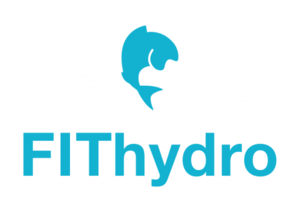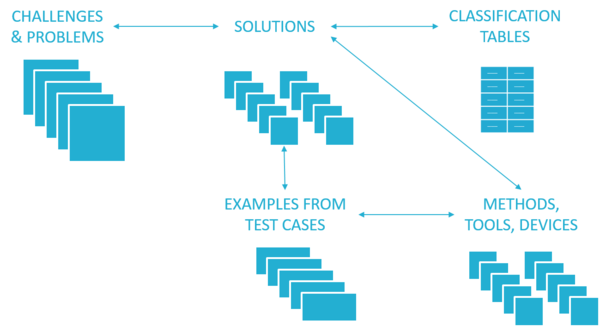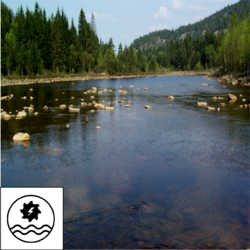Difference between revisions of "Main Page"
Bendikhansen (talk | contribs) |
Bendikhansen (talk | contribs) |
||
| Line 4: | Line 4: | ||
=Hydropower and fish: challenges= | =Hydropower and fish: challenges= | ||
| − | Hydropower is a very site-specific technology developed where the topography and hydrology are | + | Hydropower is a very site-specific technology developed where the topography and hydrology are favorable. All hydropower plants require construction of a dam or weir, generally obstructing fish movements. Habitat are altered by imposed changes in flow and/or sediment transport and the set of impacts can be inter-related. The magnitude of the changes in flow is to a large degree determined by the size of the reservoir, making it possible to store water from period of abundant resources to periods of lower inflow. Biology and composition of the fish population is, however, unique to each site. As such, the environmental problems and the related measures are also very specific to each location, posing challenges to presenting generic measures viable to all possible sites, and often the solution will be a combination of measures. |
| − | In general, hydropower [[:category:types of problems|impacts]] on fish | + | In general, hydropower [[:category:types of problems|impacts]] on fish are divided into five categories on this wiki. Each of these challenges are briefly described, and then a catalogue of potential mitigation measures are presented. |
| − | # | + | #[[Habitat]] |
| − | # | + | #[[Environmental flow]] |
| − | # | + | #[[Sediments]] |
| + | #[Downstream fish migration]] | ||
| + | #[[Upstream fish migration]] | ||
| − | + | Habitat impacts can be caused directly by alterations in the river, such as flood banks or channeling, or indirectly through alterations in the flow/sediment regime. Environmental flow impacts are related to changes in the flow regime in the river, such as low flows, floods, and average flow. Changes here can directly impact migration patterns, as well as indirectly impact habitat conditions (e.g. sediment clogging, armoring). Sediment impacts can be caused by alterations to the sediment balance in the system, such as surplus or deficit of sediments (once again leading to clogging or armoring). Upstream and downstream migration are related to the physical barrier that fish encounter when a dam (and turbine) is built, which can be a challenge for migratory species. | |
=What is the FIThydro wiki and how do I use it?= | =What is the FIThydro wiki and how do I use it?= | ||
| − | This wiki was created to help users implement the appropriate [[:category:measures|solutions/mitigation measures]] for environmental | + | This wiki was created to help users implement the appropriate [[:category:measures|solutions/mitigation measures]] for environmental challenges caused by hydropower production. The mitigation measures are classified according to various [[Classification table|parameters]], such as appropriate climatic regions, which species they are aimed at, which physical condition they address, etc. Each measure has a suggested procedure with recommended [[Methods,_tools,_and_devices|methods, tools, and devices]] for different stages of the implementation. A number of [[:category:test cases|test cases]] are also presented, with links to applied and relevant solutions, methods, tools and devices. Additionally, information about studies on [[Policy and public acceptance]] and estimates of [[Costs of solutions|the cost of implementing mitigation measures]] are presented. Lastly, a [[Decision_support_system|Decision Support System]] (DSS) for selecting appropriate mitigation measures has been developed. The DSS synergizes with this wiki. |
[[file:wiki_overview.png|600px|center]] | [[file:wiki_overview.png|600px|center]] | ||
Revision as of 08:25, 9 October 2020
Contents
The FIThydro project
FIThydro addresses the decision support in commissioning and operating hydropower plants (HPP) by use of existing and innovative technologies. It concentrates on mitigation measures and strategies to develop cost-efficient environmental solutions and on strategies to avoid individual fish damage and enhancing population developments. Therefore HPPs all over Europe are involved as test sites. Read more about the FIThydro project on the official project website.
Hydropower and fish: challenges
Hydropower is a very site-specific technology developed where the topography and hydrology are favorable. All hydropower plants require construction of a dam or weir, generally obstructing fish movements. Habitat are altered by imposed changes in flow and/or sediment transport and the set of impacts can be inter-related. The magnitude of the changes in flow is to a large degree determined by the size of the reservoir, making it possible to store water from period of abundant resources to periods of lower inflow. Biology and composition of the fish population is, however, unique to each site. As such, the environmental problems and the related measures are also very specific to each location, posing challenges to presenting generic measures viable to all possible sites, and often the solution will be a combination of measures.
In general, hydropower impacts on fish are divided into five categories on this wiki. Each of these challenges are briefly described, and then a catalogue of potential mitigation measures are presented.
- Habitat
- Environmental flow
- Sediments
- [Downstream fish migration]]
- Upstream fish migration
Habitat impacts can be caused directly by alterations in the river, such as flood banks or channeling, or indirectly through alterations in the flow/sediment regime. Environmental flow impacts are related to changes in the flow regime in the river, such as low flows, floods, and average flow. Changes here can directly impact migration patterns, as well as indirectly impact habitat conditions (e.g. sediment clogging, armoring). Sediment impacts can be caused by alterations to the sediment balance in the system, such as surplus or deficit of sediments (once again leading to clogging or armoring). Upstream and downstream migration are related to the physical barrier that fish encounter when a dam (and turbine) is built, which can be a challenge for migratory species.
What is the FIThydro wiki and how do I use it?
This wiki was created to help users implement the appropriate solutions/mitigation measures for environmental challenges caused by hydropower production. The mitigation measures are classified according to various parameters, such as appropriate climatic regions, which species they are aimed at, which physical condition they address, etc. Each measure has a suggested procedure with recommended methods, tools, and devices for different stages of the implementation. A number of test cases are also presented, with links to applied and relevant solutions, methods, tools and devices. Additionally, information about studies on Policy and public acceptance and estimates of the cost of implementing mitigation measures are presented. Lastly, a Decision Support System (DSS) for selecting appropriate mitigation measures has been developed. The DSS synergizes with this wiki.
Categories of mitigation measures
Click the image to go to the main article for each category. The mitigation measures for each category are listed in the drop-down menus, as well as in the main articles.



